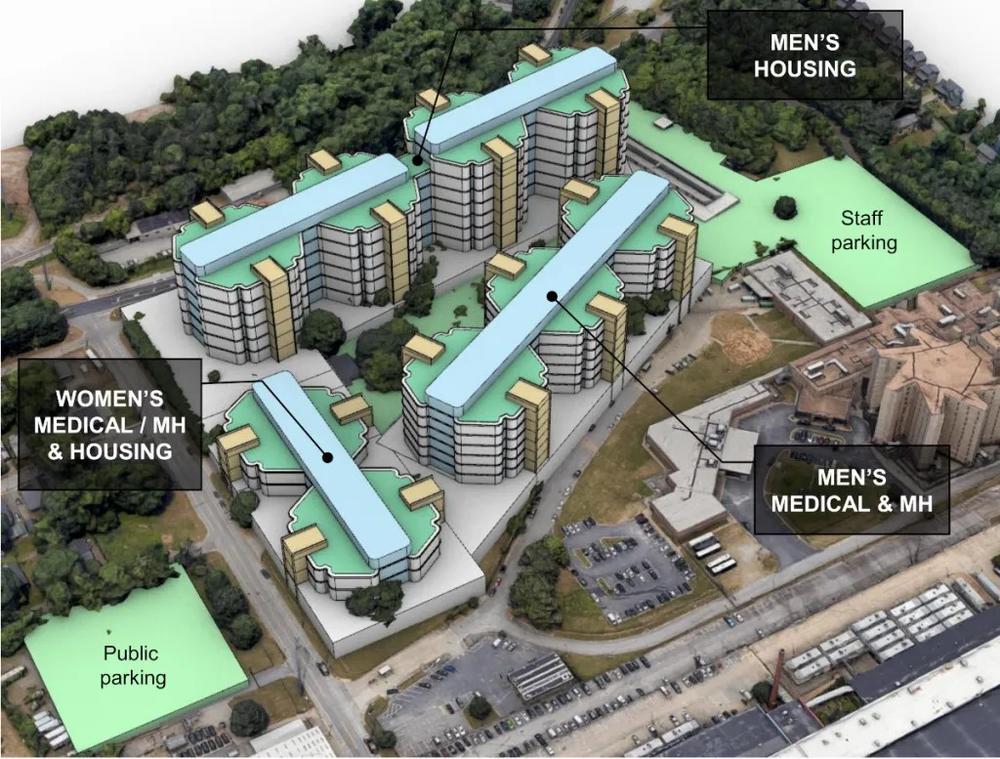
Caption
The new Fulton County jail would be located off Rice Street next to the existing jail that is shown at right in the rendering.
Credit: Fulton County

The new Fulton County jail would be located off Rice Street next to the existing jail that is shown at right in the rendering.
A new Fulton County Jail facility constructed on the current Rice Street site in Atlanta could cost up to $2 billion, according to a feasibility study presented to the Fulton County Commission on Dec. 6
The commission heard a staff proposal that the county enter a tax-exempt public-private partnership to design, build, finance, and maintain the new jail at a total annual cost of $114 million for 30 years.
The feasibility study also projected an increase in what it costs to operate the jail by 24.9 percent from 2028 to 2031, rising from $211 million to $264 million.
Funding for the new jail construction would come through a local option sales tax and/or a millage rate increase, according to the study.
The new jail would have 4,416 beds, with 89 percent dedicated to men, according to the feasibility study. It would be 3.9 times bigger than the existing jail, with almost 1.8 million square feet of space.
The county would need to relocate its vehicle maintenance, accountability court, and the Jefferson Place homeless shelter to make room for the new jail. The existing jail would remain standing and in use until the new jail was brought online in 2029.
Commissioner Bob Ellis said he thought the proposed jail was too big and too expensive. He said financing the jail through sales tax would require getting a referendum put on the ballot through the state legislature. Ellis said the project shouldn’t move forward before financing is in place.
Commissioner Dana Barrett said the idea of waiting to see if a sales tax is approved didn’t seem tenable and the board should move ahead so a delay doesn’t cost the county more.
“Yes, we do everything we can to get a sales tax, but I think we have to acknowledge that if we are not able to get a sales tax, we will have to raise the millage rate. And if we can’t say that out loud, we’re not going to get there,” she said.
Commissioner Natalie Hall said the feasibility study captured what solves the problems inside the building, which she said are the wraparound programs and services, and the state-of-the-art mental health and medical housing that supports treatment and recovery.
Those programs will include substance use disorder treatment, intervention, and counseling, mental health treatment, reentry services for housing and employment, social services, health care, and transportation. They also include education, vocational skills, faith- and culture-based services, and a library for recreational and legal research use.
As the new jail is designed and construction begins, the feasibility study projects a growing average daily detainee population from 3,105 in 2024 to 3,275 in 2028.
Demolition of the existing jail in 2030 was estimated to cost $21.9 million.
This story comes to GPB through a reporting partnership with Rough Draft Atlanta.